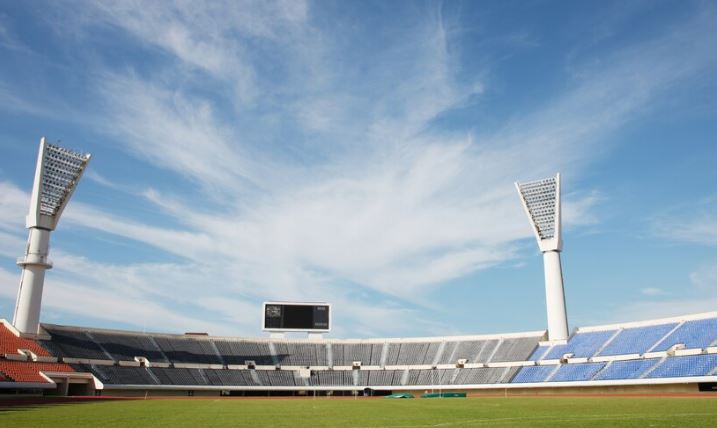Your first thought when purchasing a ticket to a major football game or concert is typically, “What’s the view like from this seat?” Traditionally, you would rely on crude charts or hazy color blocks and take a chance. However, that uncertainty is rapidly disappearing thanks to 3D Digital Venue. Their strategy is a significant advancement in how people experience live events before they even enter the turnstile, not merely a small improvement.
With the help of 3D Digital Venue, which painstakingly recreates stadiums, theaters, racetracks, and arenas as digital twins, fans can virtually tour venues, rotate 360-degree seat views, and even explore VIP lounges—all from the comfort of their mobile device. Before signing the papers, this preview can be likened to test-driving a luxury car for someone who is debating whether to spend £180 on a balcony seat at the Peacock Theater or a pitch-side view at Wembley.
| Company Name | 3D Digital Venue |
|---|---|
| Founded | 2012 |
| Headquarters | C/Àlaba, 61 6th 1 A, 2, 08005 Barcelona, Spain |
| CEO / Key Person | Michele Marino |
| Industry | Sports and Entertainment Technology |
| Specialization | Digital Twins, Venue Virtualization, Ticketing Integration |
| Major Clients | FC Barcelona, NBA (Houston Rockets, Cleveland Cavaliers), Manchester City, Wembley Stadium |
| Products & Services | 3D Venue Models, 360 |
The team has transformed over 579 venues and provided over a billion virtual seat views through strategic partnerships with internationally renowned teams like Liverpool FC, SL Benfica, and even NBA arenas like Toyota Center. Fans will benefit from extremely thorough previews and the opportunity to buy tickets with renewed assurance. It results in noticeably higher conversion rates and fewer refund requests for venue managers.
The technology enables the seamless integration of immersive venue visualization tools with ticketing systems through the use of precision mapping and API integration. Imagine assembling two expertly designed gears—smooth, safe, and incredibly effective. The ability for fans to view individual seats down to the last row angle once it is deployed significantly increases the transparency of early bird and premium pricing.

Ticketing has evolved in recent years to include assurance as well as availability. Fans now demand the same level of assurance when spending money on live experiences, much like tourists use Google Street View to check out hotels or restaurants. Using a combination of incredibly clear interface design and thoughtfully constructed digital architecture that puts usability first, 3D Digital Venue satisfies this need.
The subtle way in which this technology is redefining exclusivity is especially inventive. People now expect more than just a seat when they spend hundreds or even thousands of dollars on VIP tickets to see performers like Coldplay or Beyoncé. They want the whole sneak peek, including the proximity of the restrooms, the lounge atmosphere, and the champagne service area. Additionally, 3D Digital Venue bridges the once-annoying gap between brochure and reality by creating digital spaces that feel remarkably similar to the real thing.
The competition for a small number of seats during major events can be likened to a frenzy, particularly when it comes to international matches or celebrity performances. In addition to being useful, being able to choose and reserve your preferred view in advance is comforting. In an environment that has traditionally treated them like a name on a seating chart, it gives fans a sense of control and customization.
Trends in other industries are also reflected in the move to immersive venue previews. 3D walkthroughs are being used more and more by real estate companies to display upscale properties. High-end fashion brands like Burberry and Balenciaga are experimenting with digitally rendered showrooms and runways that are ready for the metaverse. The combination of virtual clarity and physical presence is quickly becoming the industry standard in entertainment.
In terms of technology, the company offers more than just graphics. Event planners can learn about user behavior patterns with their analytics suite, including which seats fans click on most frequently, which sections they explore the most, and even how long users spend in particular areas. When carefully considered, these insights have the potential to greatly influence pricing strategy and marketing efficacy.
Adopting 3D Digital Venue may seem like a generational leap for mid-sized arenas or up-and-coming music festivals. They now have access to a very flexible tool that can be used for anything from promoting VIP experiences to conducting virtual tours to interacting with season ticket holders. They are no longer limited to print PDFs or simple infographics. This democratization of high-end technology is consistent with a larger trend in which companies now view fans as long-term stakeholders rather than just ticket purchasers.
The team’s home city of Barcelona should also be taken into account. In addition to being a center for sports innovation, it is also home to a number of tech-forward startups, which makes it the perfect setting for a business that wants to redefine physical space through digital clarity. The company’s growth feels purposeful and incredibly successful, thanks to Michele Marino at the helm and a team rooted in design, data, and sports culture.
With strategic alliances and an eye toward the future, 3D Digital Venue keeps gaining the trust of both corporate clients and fans. In the experience economy of today, trust is valuable. They’re also making good use of it, as evidenced by the more than 4,700 seating chart integrations and expanding list of partners.
Platforms such as this one will probably become more than just a booking tool in the years to come as augmented reality glasses and spatial computing devices become more widely used. They will serve as immersive layers, bringing dynamic lighting previews, real-time statistics, and even special pre-show artist messages straight into the fan’s field of vision.



